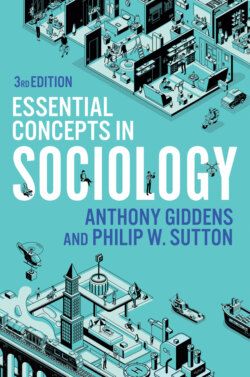Читать книгу Essential Concepts in Sociology - Anthony Giddens - Страница 67
Origins of the Concept
ОглавлениеReflexivity is related to ideas of reflection or self-reflection, and therefore it has a very long history. However, its usage in the social sciences can be traced back to the ideas of George Herbert Mead (1934) and Charles H. Cooley (1902) on the social self, W. I. Thomas’s social constructionist approach, and some early work on self-fulfilling and self-defeating prophecies. Cooley and Mead rejected the notion that the individual self is innate. Instead, Cooley argued that the self is created through social interaction with others as people come to see themselves in the way others see them. In Mead’s theory, this continuous interaction between the biological human organism and the social environment of other people produces a two-part self consisting of an ‘I’ and a ‘me’, which are in constant internal conversation within the individual person. This individual reflexivity forms the backdrop to meaningful social interaction.
However, individual and social reflexivity became more central to social theory from the late twentieth century. In particular, the theoretical ideas of Ulrich Beck (1994) and Anthony Giddens (1984) have extended the concept of reflexivity from the individual to the social level, while a renewed emphasis on qualitative research methods has drawn attention to the fundamentally reflexive nature of social life per se. The existence of both individual and social reflexivity has been seen as fatally undermining any vestiges of positivism in sociology.
